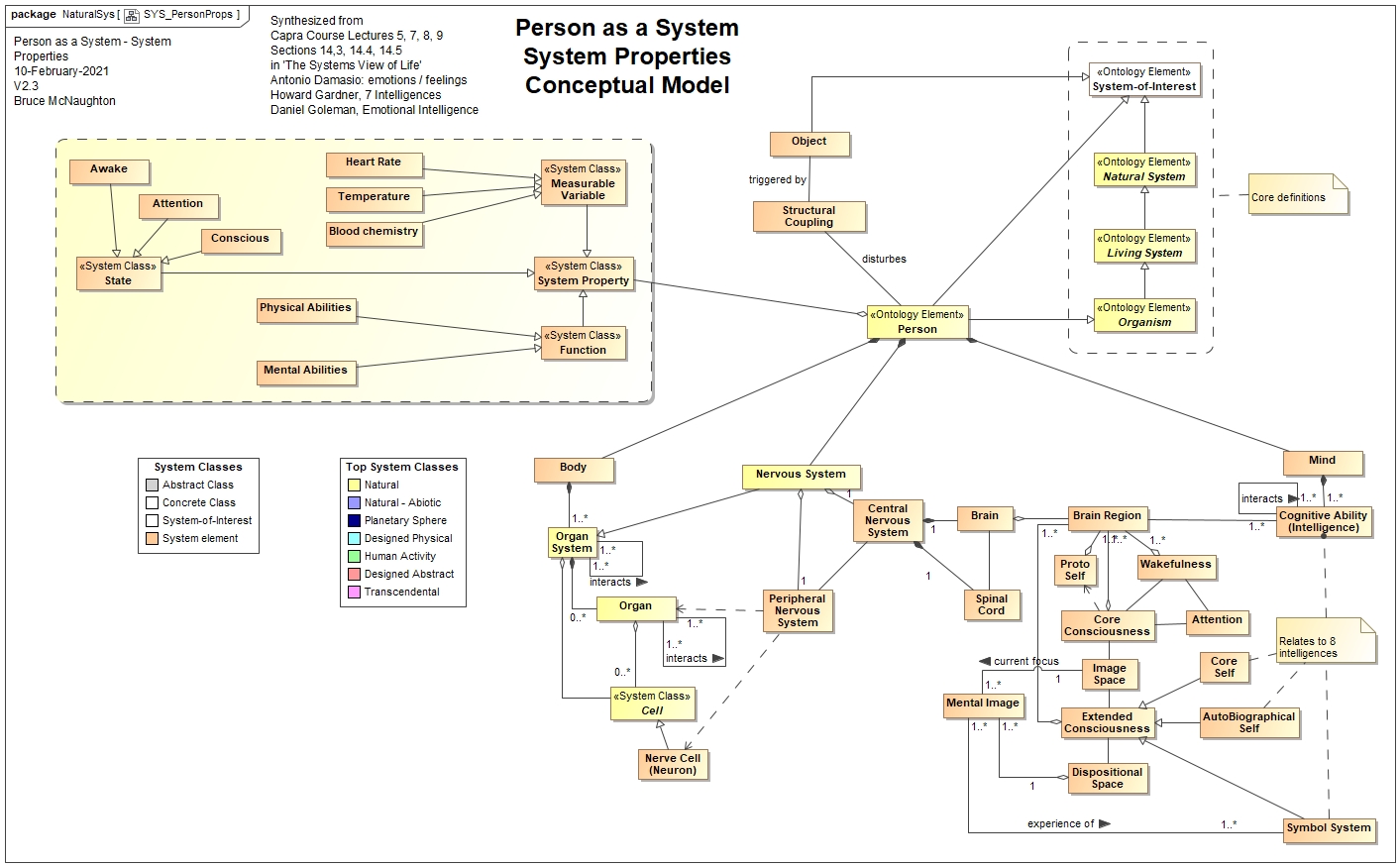View: System Properties
This section identifies the system properties. Suggested headings have been included. These can be tailored.
System properties Overview
The properties identified in this section are created through the interaction of the parts. The following model provides an overview of the system properties and their origin

Systemic Measurable Variables
The key variables are:
- Body Temperature
- Heart Rate (Pulse)
- Blood Pressure
- Blood Electrolyte Level (Anion Gap)
- Eyesight (e.g. 20/20)
- Hearing Range
- Performance related to abilities (speed, accuracy, etc)
- Performance: achieving or exceeding personal objectives.
- Competence levels: skills, knowledge, experience, behaviors, attitudes, and beliefs.
Systemic Capabilities or Functions
These capabilities are properties of the whole person not any of the individual parts.
Work abilities:
- Skills, Knowledge, Experience, Attitudes, Behaviors
- Specific to one or more domains of knowledge
- Specific to one or more social systems
- Setting Goals and taking actions to achieve them (taking personal responsibility)
- NOTE: these are generally the abilities that are part of an employment contract.
Mental abilities
- perceptual abilities (listening, visualizing, etc)
- cognitive abilities
- imagination abilities (creating and reflecting on mental images)
- judgment abilities (choice and decision making)
- appreciative abilities
- creative abilities (creating new or adapting existing elements based upon current abilities)
- learning abilities (ability to unlearn and learn. The skills for personal learning and changing are important: See Learning Styles and cognitive abilities.)
- communication abilities (using language to share personal mental images and coordinate actions in other people)
- Using and improving processes and tools to carry out work.
- Problem Solving and continuous improvement
- Setting goals and planning.
- Taking actions to achieve the goals.
- Maintaining health and dynamic balance
Physical abilities
- walking, running, etc
- lifting, throwing, etc
- sports abilities, etc
- Use of technology, etc
System States
A person may be in a number of different states:
Transformational:
Age based development approach (Development Stages)
- Infancy
- childhood
- adolescence
- young adulthood
- adulthood
- old age (elderhood)
Operational
Emotional States (based upon core consciousness)
- Normal, Stressed, Illness, Anxious, Fabulous
Reflective States (based upon reflective consciousness)
- Learning, Planning, Reflecting,
Systemic Quality Properties
- Health of the whole person (psychosomatic integrative measurement)
- Belbin Team Role Indicator.
- Personality
- Psychological Preferences (Myers-Briggs Type Indicator - MBTI)
System Quantity Properties
- Weight
- Height
- Volume
- Type: Male, Female, Non-binary